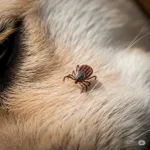
Caring for a pet involves more than just feeding and playing—maintaining proper hygiene is essential for their health and happiness. In India, where climate conditions vary greatly and pollution can be a concern, adopting the right grooming habits for your furry friend becomes even more important. This guide provides practical advice on how to manage bath time and ensure optimal hygiene for your pet, whether it’s a dog, cat, or smaller animals.
Understanding Your Pet’s Bathing Needs
Dogs
Dogs generally need baths every 4-6 weeks, but the frequency can vary depending on factors such as:
- Breed: Long-haired breeds like Golden Retrievers need more frequent grooming than short-haired breeds.
- Activity Level: Dogs that spend a lot of time outdoors may need more frequent baths.
- Skin Condition: Pets with skin allergies or conditions might need special shampoos or more regular baths as advised by a vet.
Cats
Cats are self-grooming animals and typically do not require frequent baths. However, occasional baths might be necessary if:
- They come into contact with sticky or harmful substances.
- They are unable to groom themselves properly due to age or illness.
- They have a skin condition requiring medicated baths.
Small Animals
Rabbits, guinea pigs, and similar pets generally do not require baths. Instead, focus on keeping their living environment clean and dry. Consult a veterinarian if bathing becomes necessary.
Preparing for Bath Time
1. Choose the Right Products
Use pet-specific shampoos and conditioners to avoid skin irritation. Ensure that products are:
- Free of harsh chemicals
- Appropriate for your pet’s coat and skin type
- Approved by veterinarians
2. Assemble Your Supplies
Gather everything before starting the bath to minimize stress:
- Pet-friendly shampoo and conditioner
- Towels
- Brush or comb
- Non-slip mat for the tub
- Cotton balls to gently place in ears (optional)
- A cup or detachable showerhead for rinsing
3. Set the Scene
- Use a quiet, calm space.
- Ensure water temperature is lukewarm.
- Keep treats handy to reward good behavior.
Bathing Your Pet: Step-by-Step
Dogs
- Brush Before Bathing: Remove loose fur and tangles to prevent matting.
- Wet Thoroughly: Use a cup or showerhead to wet the coat completely.
- Apply Shampoo: Start from the neck and work your way down. Massage gently.
- Avoid Eyes and Ears: Be careful to keep water and shampoo away from these sensitive areas.
- Rinse Well: Ensure all shampoo is rinsed out to prevent skin irritation.
- Condition (Optional): Apply conditioner if needed and rinse thoroughly.
- Dry: Towel-dry or use a pet-safe dryer on a low setting.
Cats
- Minimize Stress: Keep the bath short and calm.
- Support Gently: Hold them securely but gently.
- Rinse Quickly: Use minimal water and shampoo.
- Dry Thoroughly: Wrap in a towel to dry them as much as possible.
Small Animals
- Consult a vet before bathing.
- Spot cleaning is often a better option.
Post-Bath Care
- Drying: Ensure your pet is completely dry to prevent skin infections.
- Brushing: Brush your pet to remove loose hair and prevent tangles.
- Check Ears and Paws: Ensure they are clean and dry.
- Reward: Offer a treat to reinforce positive behavior.
Maintaining Hygiene Between Baths
1. Brushing
Regular brushing removes dirt, spreads natural oils, and prevents matting.
- Dogs: Brush 1-3 times a week.
- Cats: Brush long-haired breeds daily; short-haired breeds can be brushed weekly.
2. Paw Care
- Clean paws after outdoor walks.
- Trim nails regularly.
- Apply pet-safe paw balm if needed.
3. Ear Cleaning
- Check weekly for dirt or odor.
- Use a vet-recommended ear cleaner.
4. Dental Hygiene
- Brush teeth with pet-safe toothpaste.
- Provide dental treats or toys.
5. Eye Care
- Wipe eyes gently with a damp cloth to remove discharge.
Seasonal Considerations in India
Summer
- Increase bathing frequency if your pet is prone to heat rashes.
- Keep water cool (but not cold) for baths.
- Use flea and tick control measures.
Monsoon
- Dry thoroughly after baths to prevent fungal infections.
- Clean paws after walks to remove mud and germs.
- Maintain a dry and clean sleeping area.
Winter
- Reduce bath frequency.
- Use warm water for bathing.
- Ensure your pet is completely dry before going outside.
Dealing with Common Challenges
Fear of Water
- Introduce water gradually.
- Use positive reinforcement.
- Make the bath a playful experience.
Skin Sensitivity
- Consult a vet for specialized shampoos.
- Monitor for redness, itching, or irritation.
Shedding
- Increase brushing frequency.
- Maintain a high-quality diet to support healthy skin and coat.
Odor Control
- Regular grooming and cleaning of bedding help manage pet odor.
- Use pet-safe deodorizing sprays sparingly.
Tips for a Stress-Free Bath Time
- Start Young: Familiarize your pet with bathing early in life.
- Stay Calm: Your pet will mirror your behavior—stay calm and encouraging.
- Consistency: Establish a regular grooming routine.
- Professional Grooming: Consider periodic visits to a professional groomer.
Final Thoughts
Maintaining your pet’s hygiene is key to their health and well-being. By understanding their grooming needs and creating a positive bath time experience, you can ensure a clean, happy, and healthy pet. With the right approach, bath time can be a bonding experience rather than a stressful chore. Happy grooming!



Leave a Reply